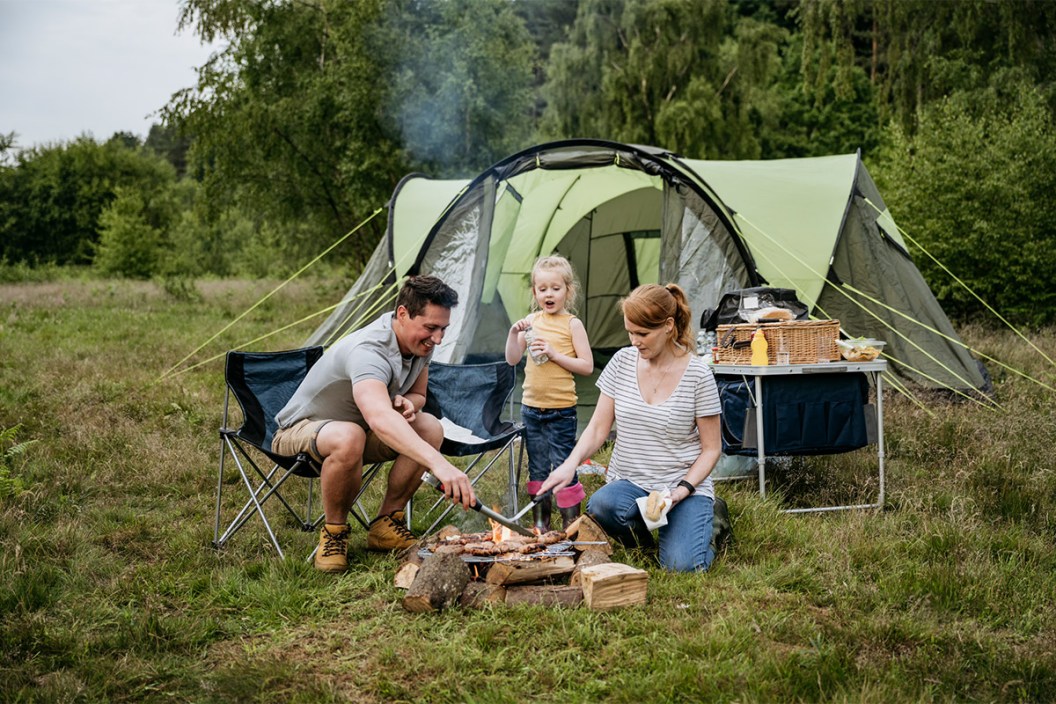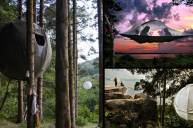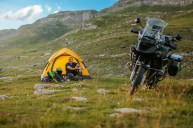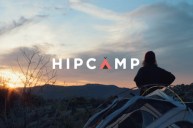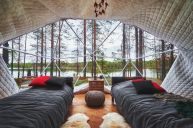There are so many ways to satisfy the hunger to get outdoors. Some people escape to the primal wilderness to sleep on the damp, hard ground with only the moon shining above them. Others retreat to a cozy camper to lay under lush blankets, breathe in the fresh air, and get a good night's rest. The first of those would be labeled camping, the latter glamping. So, what is the difference between the two? While the terms are widely open to interpretation, we will explore a few of the differentiating factors that define camping and glamping.
Camping vs. Glamping
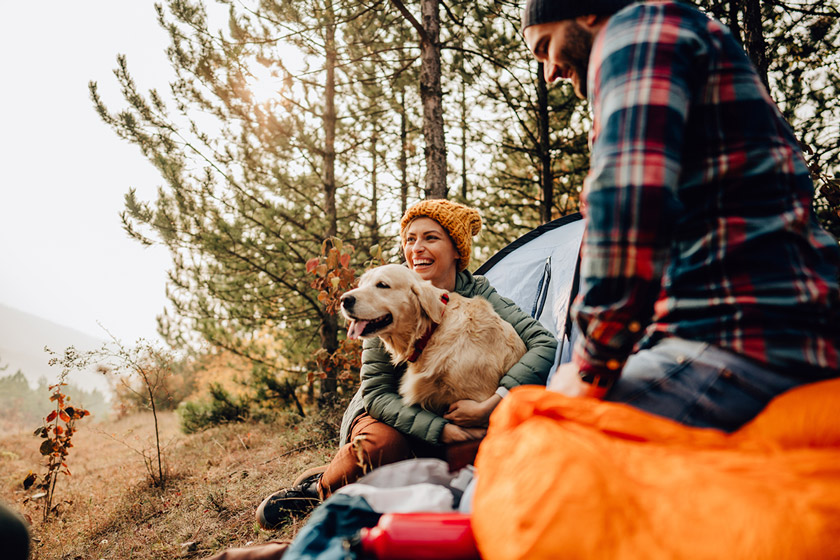
Getty: AaksandarNakic
While both camping and glamping are designed to be experiences close to nature, just how close is the defining feature. Camping is essentially "roughing it," while glamping, (glamorous camping), is supposed to be more comfortable and luxurious. The accommodations for camping are pretty basic compared to glamping. For camping, it is in the forest, under the stars, around a fire, and maybe sleeping in a tent. Glamping is altogether different. Glampers are probably sleeping on a mattress of some kind, under a sturdy roof, and maybe even a temperature-controlled shelter, such as a cabin, yurt, or RV.
What to Expect

Getty: svetikd
When deciding between camping and glamping, there are a few things to take into consideration.
Preparation:
If you aren't into doing a whole lot of preparation ahead of time, glamping is simpler in this respect. While camping, it is all on you to bring whatever you may need out there, including the tent, table, etc. It is experiencing nature in the most primitive form. While glamping, these things are taken care of before you arrive. Shelters are typically set up with amenities such as bedding, electricity, and sometimes even a refrigerator or other appliances.
Sustenance:
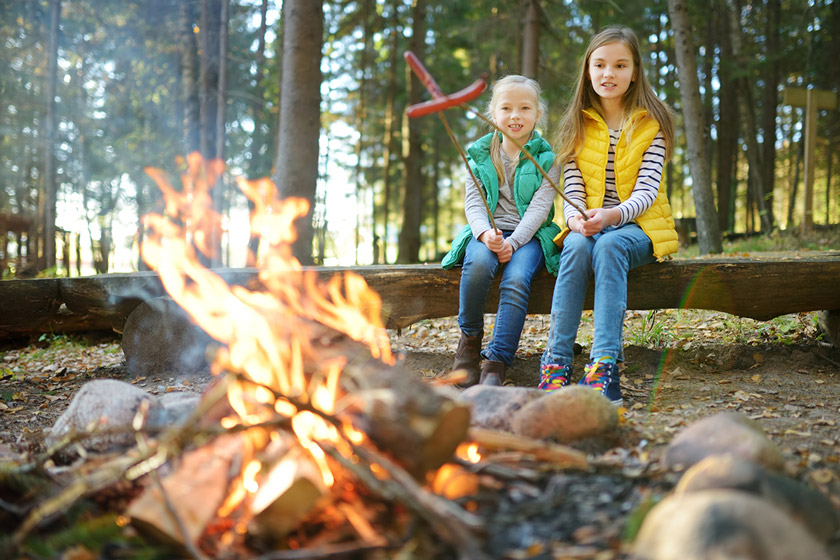
Getty: MNStudio
While baseline camping might involve lots of trail mix and roasting hotdogs over an open flame or maybe cooking something up in a Dutch oven over the campfire, glamping might involve cooking a meal using a grill, or depending on the accommodations, maybe even an oven. Most glamping locations are set up within a short drive to the nearest community, so going out to eat could also be a viable option.
Hygiene:
When nature calls, most campers will be responding behind the nearest bushes. Bathrooms aren't really a thing in the wild, but some established campgrounds are equipped with outhouses or sometimes even public bathrooms.
Regular showers aren't a high priority for most rustic camping situations. Some campers might jump in the lake and call it a day. At most, others might bring a portable outdoor shower for a quick refresh during the trip.
Glamping, on the other hand, usually involves fully functioning showers and bathrooms.
Accessibility:
The accessibility of camping and glamping depends on how it is defined. In terms of physical accessibility, glamping wins, hands down. There is no tent to set up, no gear to lug in on your back, and no firewood to chop. But in terms of financial accessibility, camping wins. The cost of glamping varies; some places are comparable to staying in a standard motel or hotel, but some cost hundreds of dollars (or more) per night. Campsite costs are considerably less, but there are costs associated with gear, such as a sleeping bag, tent, lantern, etc.
As far as being physically accessible, that is a case-by-case basis. Some campgrounds have accessible sites with leveled, smooth areas. Some glamping locations will have specific sites properly set up for accessibility, too.
Variations
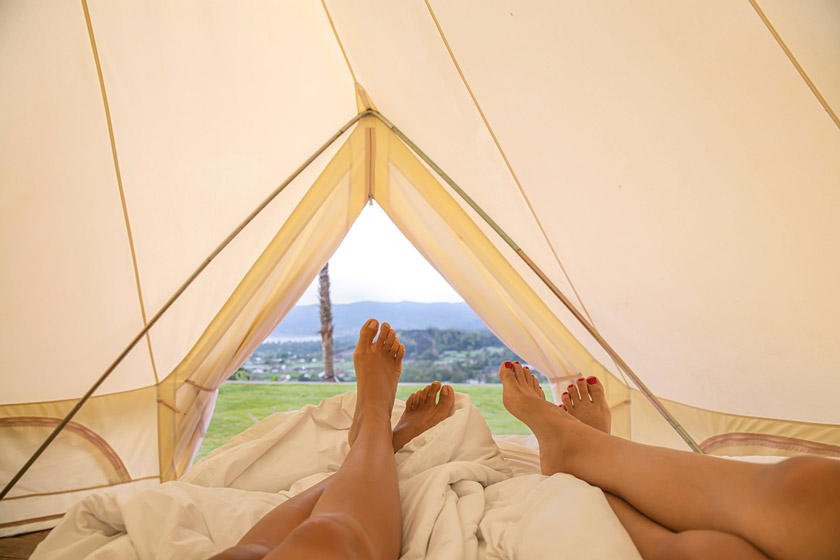
Getty: Kanawa_Studio
Variations of camping and glamping span a wide spectrum. There is the really rustic tradition of slinging a hammock up between two trees and calling it a night. Or there is boondocking, the practice of staying in an RV but without the luxuries of water or electricity hookups. Ultimately, it all comes down to the comfort levels and preferences of the campers involved. Camping or glamping? One is not "better" than the other. It is all about getting out there, making memories, and enjoying the great outdoors.
